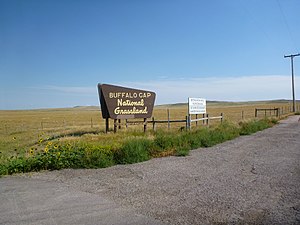

A national grassland is an area of protected and managed federal lands in the United States authorized by Title III of the Bankhead–Jones Farm Tenant Act of 1937 and managed by the United States Forest Service. For administrative purposes, they are essentially identical to national forests, except that grasslands are areas primarily consisting of prairie. Like national forests, national grasslands may be open for hunting, grazing, mineral extraction, recreation and other uses. Various national grasslands are typically administered in conjunction with nearby national forests.
All but four national grasslands are on or at the edge of the Great Plains. Those four are in southeastern Idaho, northeastern California, central Oregon, and a reserve in Illinois. The three national grasslands in North Dakota, together with one in northwestern South Dakota, are administered jointly as the Dakota Prairie Grasslands. National grasslands are generally much smaller than national forests – while a typical national forest would be about 1,000,000 acres (400,000 ha), the average size of a national grassland is 191,914 acres (77,665 ha). The largest, the Little Missouri National Grassland in North Dakota, covers 1,028,784 acres (416,334 ha), which is approximately the median size of a national forest. As of September 30, 2007, the total area of all 20 national grasslands was 3,838,280 acres (1,553,300 ha).[1]